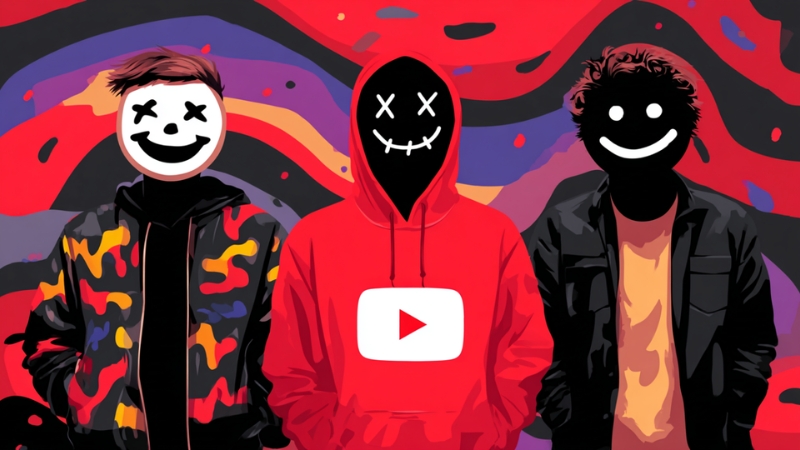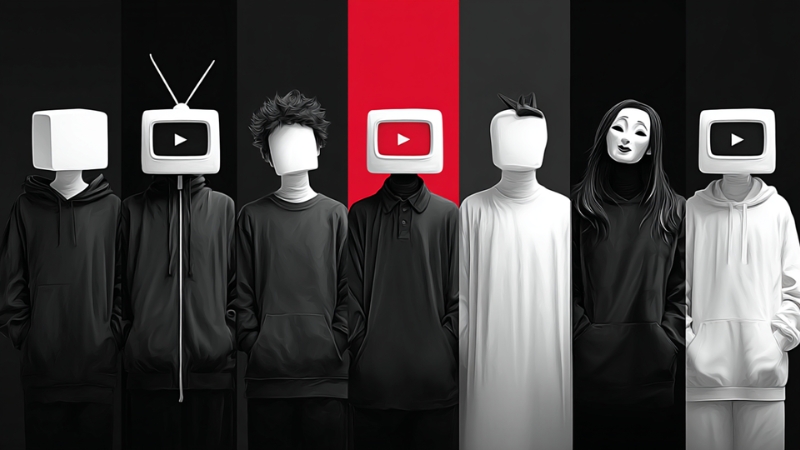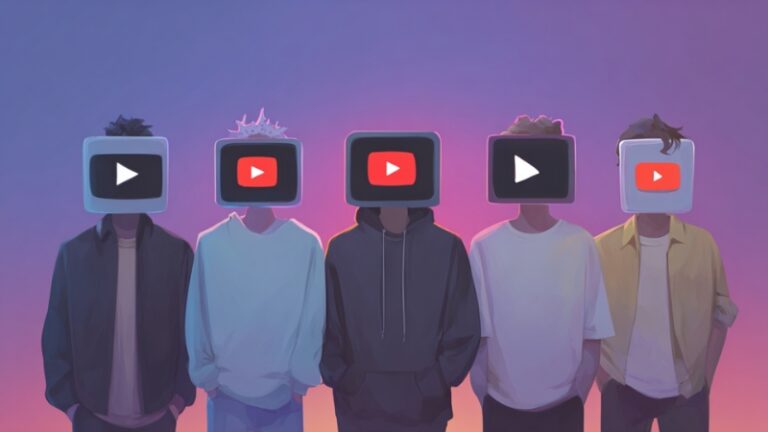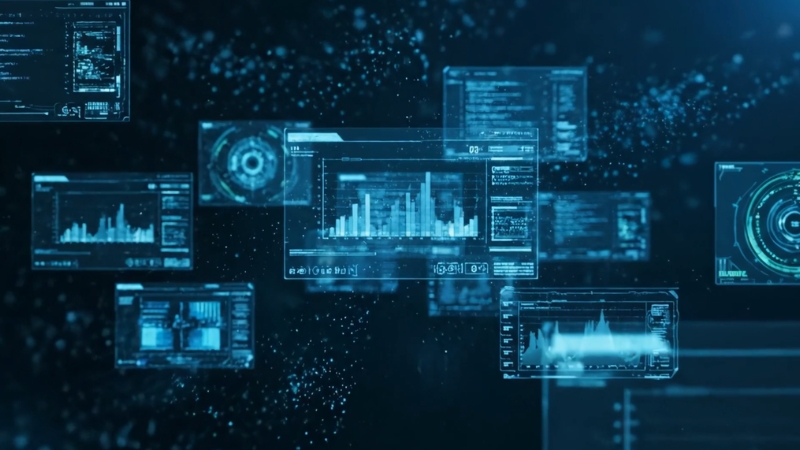Yes, faceless YouTube channels can still make money in 2025, but not the way they once did. The format has matured from a quick hustle into a real digital business model.
In the early 2020s, many creators earned a steady income from simple slideshow videos, text-to-speech narration, and stock footage compilations.
Today, that same content would likely struggle to get monetized, let alone gain traction. What works now are faceless channels that blend creativity, storytelling, and strategy with modern production tools.
The channels that succeed treat YouTube like a scalable media business, not a passive income fantasy. When managed well, these channels can still generate anywhere between 500 and 10,000 dollars per month, depending on the niche, content quality, and level of effort behind them.
What It Means to Run a Faceless Channel in 2025

A faceless YouTube channel is one where the creator never appears on camera. Instead of a visible host, the content relies on narration, visuals, animation, or screen recordings. This model appeals to those who prefer privacy, have limited filming resources, or want to scale quickly through automation.
It also removes the personal branding barrier; your ideas and voice can reach millions without your face attached.
However, faceless does not mean effortless. In 2025, YouTube’s algorithm favors originality, retention, and viewer satisfaction. Channels that use recycled visuals, repetitive stock clips, or robotic voice-overs are often penalized.
To stay profitable, faceless creators must master storytelling, niche selection, and watch-time optimization. They must understand audience psychology and learn how to hold attention without relying on personality or facial expression.
How These Channels Earn Money
Faceless creators monetize through multiple income streams. Ad revenue remains the main pillar, but diversification is essential. YouTube’s ad payments depend on CPM (cost per thousand views) and RPM (revenue per thousand views), which vary by topic.
In 2025, finance and business niches often earn RPMs between 7 and 15 dollars, while entertainment and general listicle content range between 1 and 3 dollars. Education, software tutorials, and personal development occupy a mid-tier position, often between 3 and 6 dollars.
Monetization Method
Description
Typical Earnings Potential
YouTube Ad Revenue
Payment from ads displayed on videos depends on the niche and the view count
$1–$15 per 1,000 views
Affiliate Marketing
Commission from product links or services promoted in video descriptions
$100–$1,000/month depending on traffic
Sponsorships
Paid brand mentions or dedicated segments once a channel gains traction
$500–$5,000 per deal
Digital Products or Courses
Selling templates, eBooks, or tutorials related to the channel niche
$200–$10,000+ monthly (for advanced channels)
Channel Replication
Expanding the model into multiple niches managed by a small team
Highly variable, can exceed $20,000/month total
A single income stream rarely sustains a channel long-term. The most resilient faceless creators blend ad revenue with sponsorships and affiliate links, using their video descriptions and pinned comments to drive conversions.
The Rise of Tools and Automation
The 2025 landscape is shaped by automation tools that make production faster without sacrificing quality. AI-driven platforms now write, narrate, and edit at speeds that used to take entire teams.
However, raw AI alone rarely delivers standout content. The creators who win use AI as an assistant, not a replacement.
One emerging example is JoggAI, a creative automation tool designed for script generation and storytelling structure. It helps creators outline cohesive narratives for videos while preserving human tone and pacing.
Rather than replacing human creativity, tools like JoggAI serve as amplifiers, helping creators move faster while keeping control over voice and vision. The combination of structured automation and human editing is what gives faceless channels in 2025 their competitive edge.
What Earning Looks Like in Practice
Income growth for faceless channels follows a predictable pattern. It typically takes several months of consistent uploads before YouTube’s algorithm starts recommending content widely.
During this time, most creators see minimal revenue, but the groundwork is being laid for exponential growth later.
Channel Stage
Timeframe
Average Monthly Income
Defining Features
Early Stage
0–6 months
$0–$300
Building watch hours, low visibility, often unmonetized
Growth Phase
6–12 months
$300–$1,500
Reaching 1,000 subscribers and 4,000 watch hours, ds begins to run
Established
1–2 years
$2,000–$10,000
Multiple videos ranking in search and recommendations
Advanced / Multi-Channel
2+ years
$10,000–$25,000+
Team-based production, diversified income, global audience reach
The gap between stages reflects effort and niche selection. A single viral video can compress this timeline dramatically, while months of generic uploads can stretch it indefinitely.
Why the Faceless Model Still Works
@iamdejinova Some fast ways to earn with your faceless Youtube channel: 1. Get sponsorships by partnering with brands that match your content. 2. Create and sell merch like T-shirts and posters related to your mini movies. 3. Use Patreon to let your fans support your work financially. 4. Join the YouTube Partner Program to earn from ads on your videos (this might take some time). 5. offer video creation services to other brands looking to grow their online presence @InVideo Let me know if this was helpful #youtuber #contentcreation #businessideas ♬ original sound – Dejinova
Three major dynamics keep faceless channels profitable in 2025. First, automation has become accessible and reliable. Scriptwriting tools, AI narrators, and editing software make it possible for one person to run a near-professional production line.
Second, YouTube remains a platform where information-driven and evergreen content thrives. Videos about finance, technology, productivity, or world history continue to attract global viewers who care more about clarity than charisma.
Third, the global audience itself has expanded. In 2025, YouTube viewership from countries like India, Indonesia, and Nigeria is growing faster than in the United States, creating fresh demand for English-language and multilingual informational content.
These conditions make the faceless model sustainable, but only if the creator offers value beyond surface-level entertainment. Automation cannot replace depth, insight, or storytelling flow. The successful channels use automation for efficiency, not substitution.
Why Many Channels Still Fail

Despite the opportunities, the majority of faceless channels never reach consistent profit. The main reasons are creative sameness and unrealistic expectations.
Many new creators pick overcrowded niches like top-10 facts, mysteries, or random AI-generated motivation videos. The result is predictable: low retention, poor viewer satisfaction, and no algorithmic momentum.
Another common failure comes from reuse. YouTube’s policies against “reused content” can demonetize entire channels if visuals or audio are duplicated across multiple uploads.
Channels that rely entirely on stock footage loops or automated text-to-speech often face this issue. The algorithm now identifies such repetition easily. To survive, creators must mix their own graphics, write original scripts, and use unique audio tracks.
Finally, there is the issue of time. Many creators quit within the first six months when earnings do not meet expectations. Yet almost every monetized faceless channel that succeeds takes a year or more to mature.
Traits of Successful Faceless Channels
The winning channels in 2025 operate less like hobby projects and more like small studios. They maintain consistent upload schedules, track analytics weekly, and reinvest earnings into editing, scriptwriting, and thumbnail design.
They also use storytelling principles to hold attention, narrative pacing, emotional buildup, and visual rhythm. Even without a human face, their videos “feel” alive because of how they are structured.
Success Factor
Description
Impact
Niche Focus
Selecting a clear theme with high RPM and consistent demand (e.g., finance, productivity, software reviews)
Higher ad revenue, easier targeting
Consistent Uploads
Regular posting schedule (weekly or bi-weekly)
Improves algorithmic trust
Strong Audio
High-quality narration, human or synthetic
Boosts retention and professionalism
Original Visual Composition
Custom visuals, animations, or data charts
Avoids reused-content penalties
Data Monitoring
Frequent analysis of CTR, retention, and RPM
Guides optimization and growth
These elements create a compound effect. Channels that stay disciplined on all fronts rarely fail.
The New Competitive Edge
By 2025, most profitable faceless channels no longer rely on a single person doing everything. A small team structure, researcher, editor, voice actor, and project manager, has become common. This setup allows scalability without burnout.
Some creators even operate multiple faceless brands across different languages, using translated scripts and voiceovers to reach international audiences. In this way, faceless channels have evolved into decentralized content operations, often generating far more revenue than traditional influencer-based channels.
Conclusion
Faceless YouTube channels are still a strong income model in 2025, but they require professionalism and patience. The barrier to entry is low, yet the bar for success is higher than ever.
Most creators who earn consistently have treated their channels as media startups, built on data, storytelling, and careful automation rather than shortcuts.
















